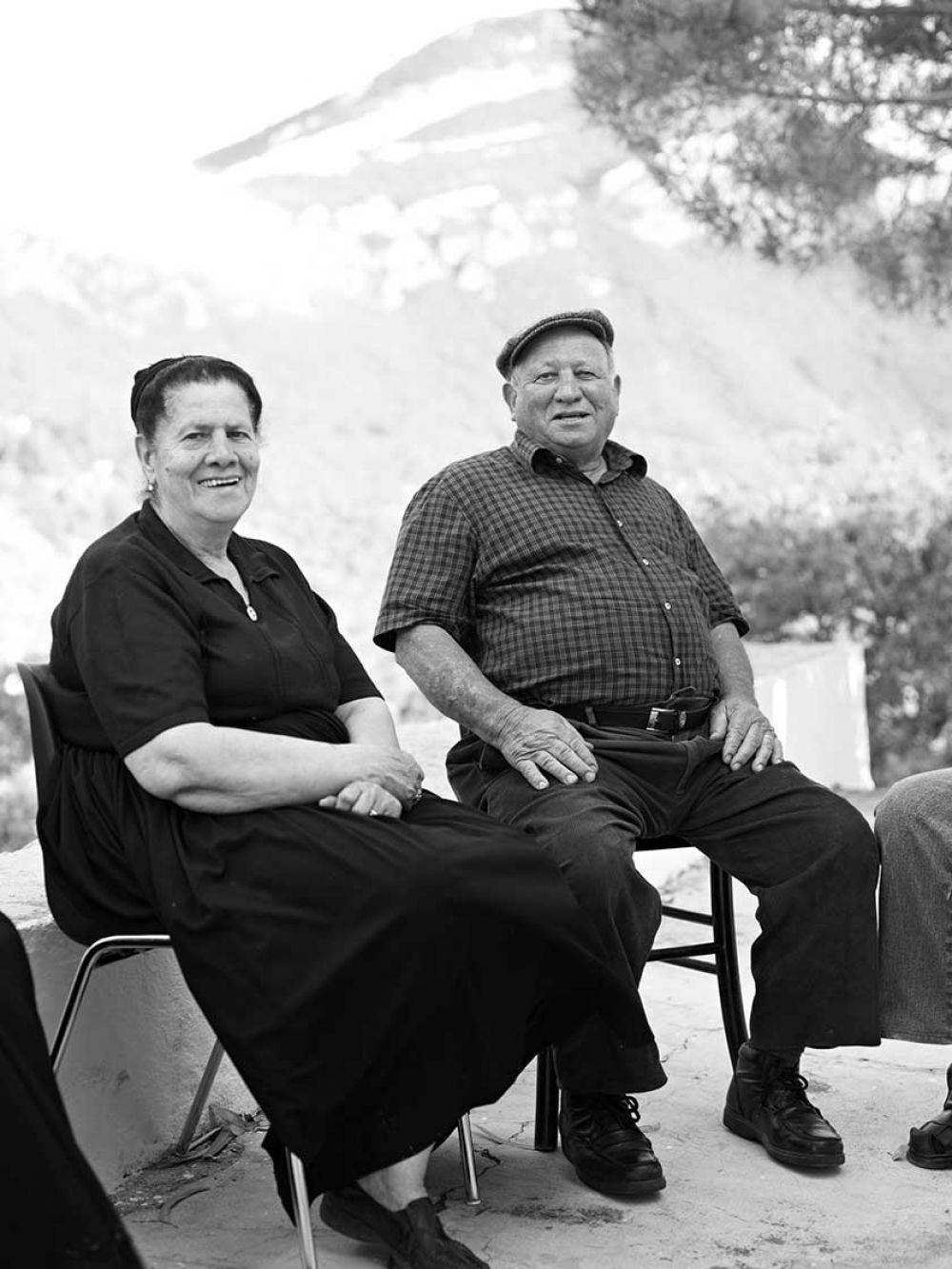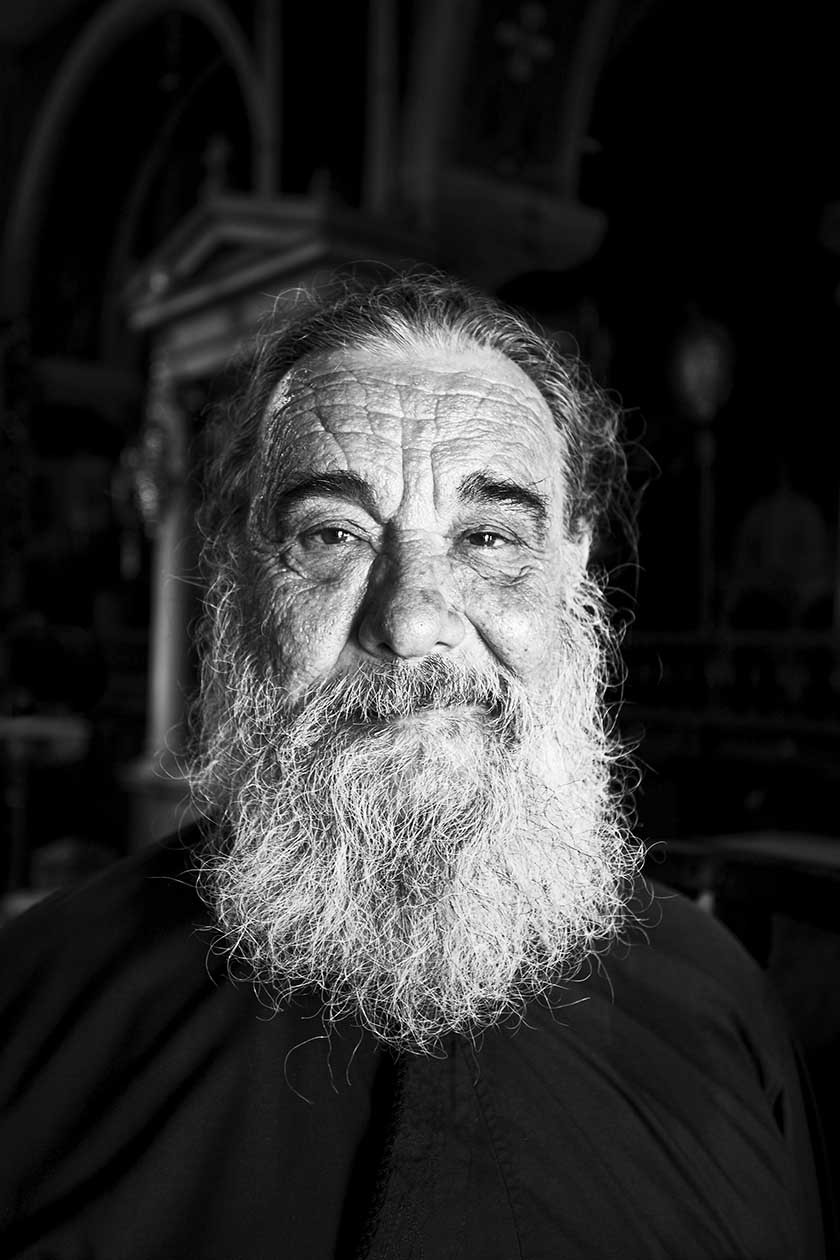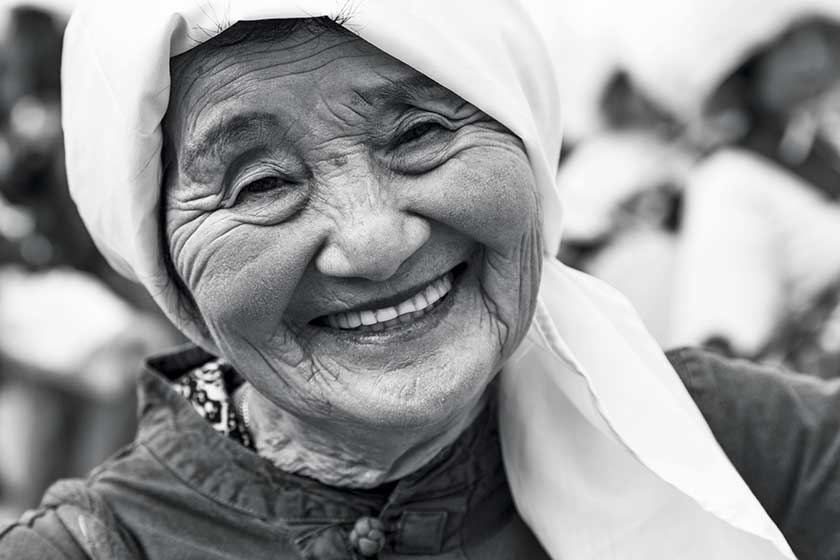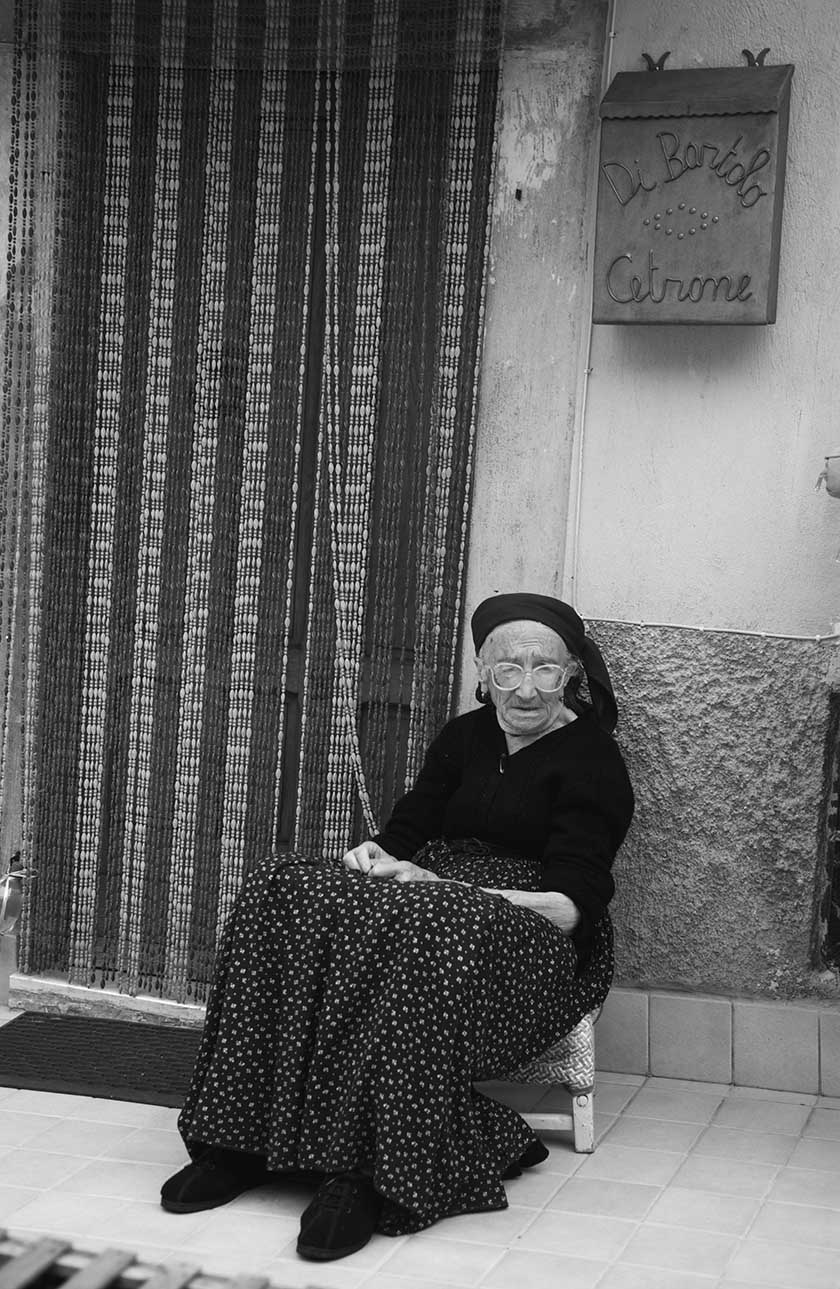The Immortals
Who wants to live forever? Imogen Lepere explores five longevity hot spots and looks into why some of the world's oldest people live as long as they do

Who wants to live forever? Imogen Lepere explores five longevity hot spots and looks into why some of the world's oldest people live as long as they do
It is ironic that this sleepy Aegean island is named after Icarus, the youth from Greek mythology whose hubris lead him to plunge to an untimely death. The population here is among the oldest in the world, around one in three Ikarians lives into their 90s and the dementia rate is a quarter that of Western Europe.
The island’s reputation as a health destination can be traced back to 4BC, when wealthy Greeks flocked here to bathe in the natural mineral springs that still steam above the fishing village of Therma. However, they aren’t the only physical characteristics that can be seen to contribute to the residents’ long lives.
Whether it’s walking to Kouniadi’s chapel or climbing the stairs to a neighbour’s terrace for a drink, it’s impossible to avoid hills. The crystalline sea glistens invitingly during summer’s big burn but Nas and Seychelles are the only sandy
beaches. The water is mostly accessed by steep treks down rocky peninsulas, such as the one at Karkinagri. This kind of hill walking that exercises the calf muscles is suggested by Germany’s Saarland University to reduce the risk of heart disease and could add up to seven years to your life.
Although it’s part of the Cyclades, Ikaria has a history of self-sufficiency. It flourished as an independent state for seven months in 1912 when it broke free from Ottoman rule and there’s still a sense that they do things differently here. Independence, you could say, breeds a joie de vivre.
In the village of Christos Raches, a police station stands unused because the island’s 10,000-strong community decided they could keep the peace perfectly well themselves. You’ll also be hard-pressed to find a ticking clock anywhere. With 40 per cent unemployment, there is simply less need to stick to rigid working hours. Instead, days are governed by nature’s gentle rhythm. Shops rarely open before 11am and then close again in the afternoon when most people are napping in shady gardens. Invite someone over for lunch and they could arrive any time between 10am and 6pm. If only all of our afternoon meetings were that flexible.
Until the Sixties, this remote island was largely forgotten by the government and the economy relied on small-scale farming. The financial crashes of 2007 and 2016 have ensured that self-sufficiency remains the norm and everyone grows their own organic fruit and vegetables. The fennel they grow is rich in potassium, known to reduce blood pressure, horta (dandelion leaves) are full of antioxidants that can protect the liver and black-eyed peas are among the most vitamin B-rich foods on Earth. A cup of black-eyed peas, perhaps served in a wrap with grilled chicken, provides you with soluble fibre, which can help stave off type 2 diabetes by keeping blood sugar balanced. If you are what you eat, then Ikaria’s elderly residents stand in good stead.
Pay-per-goat subsidies from the EU have encouraged an explosion of herds on the island, all of which roam freely, grazing on wild herbs. Cut into strips and dried in the sun (a snack called pasturma) or roasted with oregano, their lean meat provides protein that is lower in saturated fat than many other cuts and is therefore less likely to cause heart problems. Homemade sourdough and goat’s milk are breakfast staples and could also be a clue behind the residents’ long lives. It’s lower in cholesterol than cow’s milk, has smaller fat globules that are easier to digest and contains tryptophan, which boosts mood-enhancing serotonin.
The island is too steep for widespread crop cultivation and Greek strawberry trees, wild lavender and white heather cascade down its slopes at will. Native bees transport pollen, creating a dark, toffee-like honey that locals use as an antibacterial agent for open wounds. They also swear a spoonful can cure hangovers after one of the many panygiria (festivals) that keep traditional music echoing through the mountains until dawn during the summer months. When was the last time you felt relaxed enough to party all night?
As dusk falls, neighbours meet in each village’s main square to play backgammon and sip comforting ‘mountain tea’. This herbal brew is a mixture of wild marjoram, sage, mint, rosemary, ironwort flowers and lemon. All the ingredients are anti-inflammatory and locally grown, and we all know that a chat over a cuppa makes everything seem better.

For every 100,000 people living in Sardinia there are around 22 centenarians, which is twice the average for the rest of the world. Indeed, living this long is considered so common that ‘chent’annos’ (‘may you live to 100 years’) is a popular toast. The oldest siblings ever recorded were the Melis family, who had a combined age of 818 years between nine of them in 2012, an achievement they attribute to ‘minestrone soup and lots of laughter’. It certainly seems to work for them: several of the siblings still live in Perdasdefogu village, Nuoro, to this day.
This area is the beating heart of Sardinia. Oak forests roll down to the Tyrrhenian Sea, Mediterranean monk seals frequent caves in the Gulf of Orosei and rivers criss-cross the fertile plains of Baronie. Mount Gennargentu and the peaks that surround it are so inaccessible even the Roman Empire never managed to subdue the communities that cling to their slopes. People who are born here tend to die here too, so the gene pool is fairly isolated. In Talana, 75 per cent of the residents can trace their ancestry back to just 16 people. One of their shared traits is smaller-than-average red blood cells, which help protect against blood clots and malaria, which affected the island for centuries.
While good genes may be one factor contributing to their long, healthy lives, their formidable work ethic combined with plenty of physical activity is another. The steep, rocky ground doesn’t lend itself to farming and there is a long tradition of shepherding.
Take a walk into the hills and you’ll spot octogenarians and nonagenarians rambling rough footpaths after their flocks. Ask them when they plan to retire and they’ll look at you blankly. People here carry on working until they are physically unable to, unlike in the UK when the current state retirement age is 65 for men. Scientists may recommend 150 minutes of moderate activity per week but Sardinian shepherds hike 8km or the equivalent of 100 minutes every day, which can reduce the risk of high blood pressure, high cholesterol and diabetes.
Sardinian women traditionally run the household but unlike in the UK, a lot of their daily chores take them outside into the sunshine. Whether it’s foraging for kindling or shimmying up almond trees to gather nuts for meals, they’re soaking up vitamin D, which helps the body absorb calcium and is the key to maintaining good bone density. It’s perhaps why Sardinians have half the rate of bone fractures compared to other Italians.
One common phrase that you’ll hear here is ‘sa cuchina minore no timet su fuste’ (‘simple cuisine makes the home great’) and locals mostly eat organic, plant-based diets. Neighbours regularly meet up to swap gossip and share their homegrown produce, meaning everyone eats a variety of fruit and vegetables. Devouring enormous flavoursome tomatoes is a delightful way of getting immune-boosting vitamin A, while sa pompia, a hybrid of orange and grapefruit that is endemic to Nuoro’s eastern coast, are bursting with vitamin C, and peppery olive oil provides monounsaturated fatty acids that can make residents less susceptible to strokes.
Sardinian families linger over meals in noisy groups. Whether they’re enjoying fresh sardines or wild boar ragu and wholegrain pasta, a glass of locally grown cannonau wine is never far away. This robust red made up of granache grapes has the highest levels of polyphenols of any wine, which could be another explanation for the locals’ resilience. These particular type of antioxidants have been proven to fight cancer cells and help ward off dementia. Two glasses a day appear to keep the doctor away, particularly when drunk with good friends.

Now it’s time to look to the future. Women born in South Korea in 2030 will be the first in history to have an average life expectancy of 90. The new study, funded by the UK Medical Research Council and the US Environmental Protection Agency, suggests South Korean men will also be living the longest in the world with a predicted life span of more than 85 years. Not bad for a country which just 20 years ago considered 74 a good innings. Their secrets may lie in their diet, the way they interact and how they approach life on the whole.
A great example of how the people of South Korea live is on Jeju, a volcanic island floating 168 kilometres off its southern coast. The life expectancy for females in the rest of the country may be 85.6 years but in this remote community it is already 86.6. A beautiful snapshot of island’s longevity is seen in the community of legendary sea women. Haenyeo divers, sometimes called ‘the last mermaids’, have farmed the pristine waters for 400 years and exemplify this matriarchal society perfectly. Without oxygen tanks, they dive up to 20m, expertly combing the seabed for conch, urchins and seaweed, before heaving their saturated sacks ashore for their menfolk to sort.
What is even more extraordinary about these women is that they tend to be in their autumn years. Many are grandmothers or even great-grandmothers and have worked since their teens.
While they may only be selling seaweed for 1,000 won (71p) per kilo, the mental benefits of being financially independent are huge. Almost one in two South Koreans aged 65 and over live on less than half the median income, the highest proportion in any developed country. Heartbreakingly, elderly suicide rates here have increased five-fold since 1990, as parents blame themselves for having to depend on their children.
We all know that having a giggle with good friends makes us feel better but it could also help you live longer. The International Journal of Medical Sciences found that people who laugh between 10 and 25 times per day face fewer diseases than those who don’t. Spend time with these sea women and you’ll see this theory in action. Whether shooting the breeze in the tarijang (bathhouses) or bantering over the day’s catch, their sun-wisened faces regularly crease with laughter. Friendships run deep, as many groups dive together for 40 years or more. If one of them falls ill, no one goes to sea. Instead, the whole crew will descend on the invalid’s house for reviving cups of green tea and lots of laughter.
The haenyeo’s hauls benefit the whole of the country’s health. Sea urchins are low in calories but high in protein, seaweed is a great source of soluble fibre, which helps control blood sugar, while abalone are bursting with iodine. This mineral is essential for the healthy function of the thyroid gland, which regulates the body’s metabolic rate as well as the digestive functions. And the local convention of never finishing a plate to show the generosity of the host doubles up to prevent overeating.
Jeju’s 600,000 residents luxuriate in 1,850sq km of glorious sub-tropical space. White sand beaches fringe the island, cone-shaped volcanic hills called oreum are home to secret swimming spots, while its famous tangerine (gamgyul) trees grow fat and fragrant on the fertile soil. Sound slightly more relaxing than trying to squeeze yourself on to a packed train during rush hour? Stress shortens the telomeres (the structures that prevent chromosomes from deteriorating), which in turn shortens life expectancy. Time to book that trip to the country, it would seem. Or perhaps brew a cup of green tea, head to the fishmonger and curl up with your favourite magazine.

You would normally associate untouched wilderness with local people living in poverty and a lower life expectancy. However, Costa Rica has the third-highest life expectancy in the Americas ( behind Canada and Chile) despite the fact its health expenditure per capita is just one-tenth of that spent in the United States. In 1948 the government took a decision to dismiss the standing army and redirect all the funds to healthcare, education and protecting the environment. The country has never looked back.
The Nicoya Peninsula’s longevity is unique, even by Costa Rican standards. A recent study published in the Vienna Yearbook of Population found that the probability of a 60-year- old man on the Nicoya Peninsula becoming a centenarian is 4.8 per cent – four times that of Costa Rican males in general and the are also four times more likely to see their 90th birthday than men in the United States, according to a study published by National Geographic News.
So what is it about this area that is so special? Jutting out into the Pacific like an emerald beak, it’s covered by lush rainforests and carpeted with endemic ferns. While we know spending time in nature is relaxing, the results of a study recently published in the journal Environmental Health Perspectives suggests people living in green areas are 34 per cent less likely to die from a respiratory illness and 13 per cent less likely to die of cancer. This is thanks to a combination of a plant’s ability to soak up pollution and the fact that green spaces encourage us to spend quality time outdoors. It is something that the residents of Nicoya embrace with open arms. Pura vida or ‘the pure life’ is a concept that is so ingrained in regional culture it is used as shorthand for everything from saying ‘goodbye’ to ‘that’s great’. It could take the form of anything from a stroll through the jungle to a fishing trip and beach barbecue after work.
Recent research suggests there could quite literally be something in the water here. The rain percolates through limestone rocks and is far higher in calcium and magnesium than the rest of the country. Both are essential for the maintenance of normal bone and muscle function, possibly explaining the extraordinary sprightliness of Nicoya’s pensioners. Interestingly, both minerals are among the top four most common deficiencies in the UK, alongside vitamin D and iron.
Named after a fierce tribal chief who ruled the area when the Spanish conquistadors arrived in 1523, the Nicoya Peninsula has strong associations with the indigenous Chorotega people. Matambú, the last indigenous reserve in the country is near Nicoya town and the diet on the whole peninsula takes inspiration from this ancient culture. Most people live on plain foods such as rice, maize, beans and chicken, all of which have a low glycaemic index and are high in fibre.
On average, a Nicoyan consumes just half a glass of cow’s milk a day. Nicoyans get most of their calcium from corn tortillas made from nixquezado maize; the kernels are soaked in lime and water, which infuses the grain with 7.5 times more calcium and unlocks certain amino acids otherwise unavailable in the corn.
While indigenous cooking techniques may not be something you’ll look to work into your daily routine, the people of Nicoya do have one more secret you could make use of. Their concept of a plan de vida (life plan) is key for everyone, regardless of age. The elderly remain an active, valued part of the community. When their days are filled with cycling baskets of watermelons to market, cooking for legions of grandchildren and working on leading conservation projects, it isn’t surprising that OAPs joke they are simply too busy to die.

This tiny nation with the most northerly capital in the world hasn’t had an easy ride. Relative to the size of its economy, the financial storm it weathered in 2008 was the biggest of any country in history. Its magnificent landscape is a double-edged sword. An occupational hazard of living in Iceland is the real possibility of being affected when one of its 130 active volcanoes erupts. Not conditions suited to long life, one would think.
However, according to the World Health Organisation, while the average global expectancy is 71.4 years, in Iceland it’s 82.7. This is much higher than its Nordic neighbours Sweden (81.4 years) and Denmark (80.6 years), despite the fact its citizens are nowhere near as wealthy or educated. The capital, Reykjavík, is home to 67 per cent of the population and its country’s oldest residents, so a look at the region may explain this longevity.
Iceland pumps more money into healthcare than most other developed countries but Reykjavík is particularly enlightened when it comes to OAPs. The government’s Council of Elders is a direct link between the city’s senior citizens and the state. By making suggestions of services that they would like to see more of and feeding back on the existing ones, they directly involve the elderly in every aspect of government.
Perched on the edge of silvery Faxa Bay and built above steaming thermal springs, swimming has always been one of the threads running through Reykjavík’s history. Anyone over the age of 70 can swim for free at pools throughout the city. The life-lengthening effects of swimming are proven and the scheme seems to be working. In Reykjavík, 79 per cent of its elderly exercise at least once a week, while some 74 per cent consider their health to be very good. In England, only 30 per cent of elderly residents exercise once a week, according to research conducted by the British Heart Foundation.
Iceland is officially the third happiest country in the world, which may also explain the locals’ tenacity. A survey of 38 countries by the Organisation for Economic Cooperation and Development shows 83 per cent of people in Iceland feel they have more positive experiences every day then negative ones, compared to an average of 72 per cent across the board. Stress
hormones such as cortisol accelerate the ageing process, while some studies show loneliness can have as much of an impact on life expectancy as obesity. On an isolated island with 20 hours of darkness a day in winter, it’s no surprise that Icelanders look to each other for company. In Reykjavík, the sense of community spirit is so strong that 87 per cent of people aged over 70 say they never feel lonely. Whether this is keeping the tradition of story-telling alive while putting their grandchildren to bed or catching up over brennivín (local schnapps) in cosy bars, Iceland’s elderly citizens are adding years to their lives.
The local diet is different to any other destination on our list. Plants play a key role in most areas with long life expectancy but in Iceland the growing season lasts just 40 days. Seafood is a staple. Government laws protect the quality of the water and exceptional wild salmon swim in the mountain rivers. Fishermen catch haddock, herring and cod with traditional hooks and lines, while fish farmers raise arctic char without chemicals. All are high in omega-3 fats, which can curb inflammation in the blood vessels and ward off heart attacks and strokes.
Whichever way you look at it, Icelanders are clearly doing something right. Whether it be in their diet, social values or government intervention, it’s a country where people appear to have no right to live as long as they do.

Subscribe and view full print editions online... Subscribe